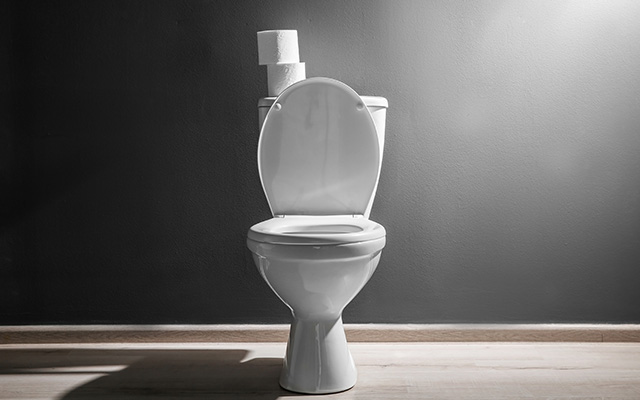
In a study conducted by the Institute for Business & Home Safety, toilet failure was one of the leading causes of residential flood damage. With water damage consistently ranking as a top cause of insurance claims in BC and Canada it’s clear that households need to kick the can as a culprit that threatens their premiums. In fact, toilet failure made headlines in Canadian Underwriter last month. A BC strata unit owner who suffered water damage after a toilet tank ruptured lost a claim to recover the cost to replace their unit’s toilets from the strata corporation. Yes indeed, there is more to preventing your toilet from causing costly water damage than taking it easy on the Charmin Ultra Strong. Here’s what else you need to do.
4 Practical Tips to Keeping Your Toilets from Leading to Costly Water Damage
1. Get Them Inspected
If you want peace of mind that your throne won’t lead to a battle in claims court and the fall of your household kingdom, then get it inspected by a professional if it’s over five years old. When you consider that the average person uses the toilet 2,500 times a year, it’s a reasonable request. That said, consider the 5-year qualifier to be moot if your current installation experiences or exhibits any of the following:
- Constant running
- Unstable base (it rocks when you sit)
- Condensation outside of the tank
- Bubbling toilet water
- Poor flushing performance (sluggish, etc.)
- Frequent clogging
- Surface cracks
- Rusted bolts
- Unsealed caulking
If any of the above is present, the threat of subsequent flooding looms heavy over your home. Have it inspected immediately. That said, a DIY jiggle of the handle won’t cut it. To diagnose a potential for failure, an expert needs to inspect for the following:
- Inadequate sizing of the water tank
- Poorly installed tank and/or connecting piping
- Cracks and fissures of the tank and/or connected pipes
- Cracks and fissures of the toilet bowl and base
- Poorly secured water supply valve
The cost of professional inspection and possible repair or replacement will often pay for itself by preventing water damage and providing more efficient use of water in the home.
2. Don’t Store “overhead” Items Near the toilet
When common toiletries (toothbrushes, etc.), accessories (soap dishes, etc.) and ornate wares (decorative seashells, etc.) are located on the bathroom countertop or atop the tank cover and close to the toilet bowl there is a risk of these items falling in unnoticed. They may become lodged and contribute to clogging, overflow, and flooding. Move them far way enough from the bowl so that the slightest bump in the night doesn’t send them into a deep dive. If counter space is limited, secure decorative items to the countertop or tank cover with non-permanent adhesives such as Sticky Tack or other double-sided adhesive solution.
3. Close the Bathroom Door
Certain household occupants may be responsible for clogging your toilet. And no, we’re not talking about Uncle Fred who visits once a year for Thanksgiving dinner. Both children and pets are often responsible for intentionally (kids) or unintentionally (kids and pets) dropping/knocking things into the toilet bowl. Given that they may not or cannot vocalize this to you, you may once again find an unwelcoming and overflowing surprise.
4. Know Your Policy
In the Canadian Underwriter court case (Rasmussen v. The Owners, Strata Plan VIS 1611) detailed in the introduction, a BC strata unit owner (Rasmussen) was not able to recover the cost associated with a toilet tank failure. The claimant called upon the strata’s bylaw which stipulated that the corporation must have insurance on common property as well as on fixtures on a strata lot — if they were built or installed by the original owner-developer as part of the original construction on the strata lot. Rasmussen declared that if a strata corporation has an obligation to insure original fixtures, it also has an obligation to repair or replace those fixtures. The B.C. Civil Resolution Tribunal did not agree, citing that the duty to insure does not impose an obligation on the strata to replace the original fixtures. While this case may directly apply to multi-residential unit owners, it is very telling for any homeowner – know what you are and are not covered for. Failure to do so can result in significant expense.
Moving forward, consult with an independent insurance broker to check your coverage regarding the potential for water damage from toilet system (and other) failure. Contact Park Insurance today to receive a comprehensive assessment of your policy.
Another article you may be interested in:
